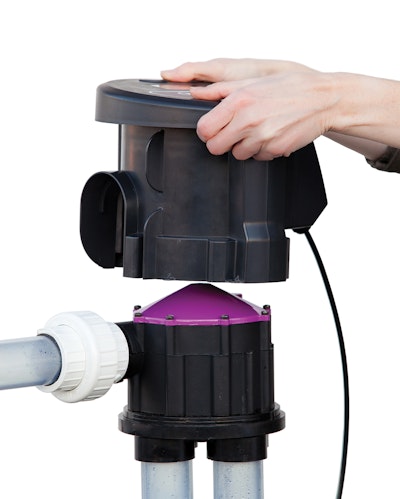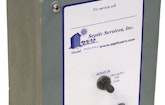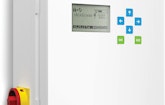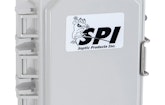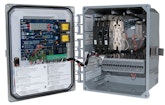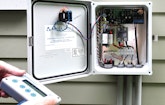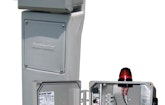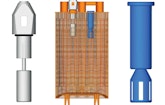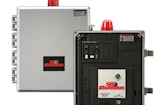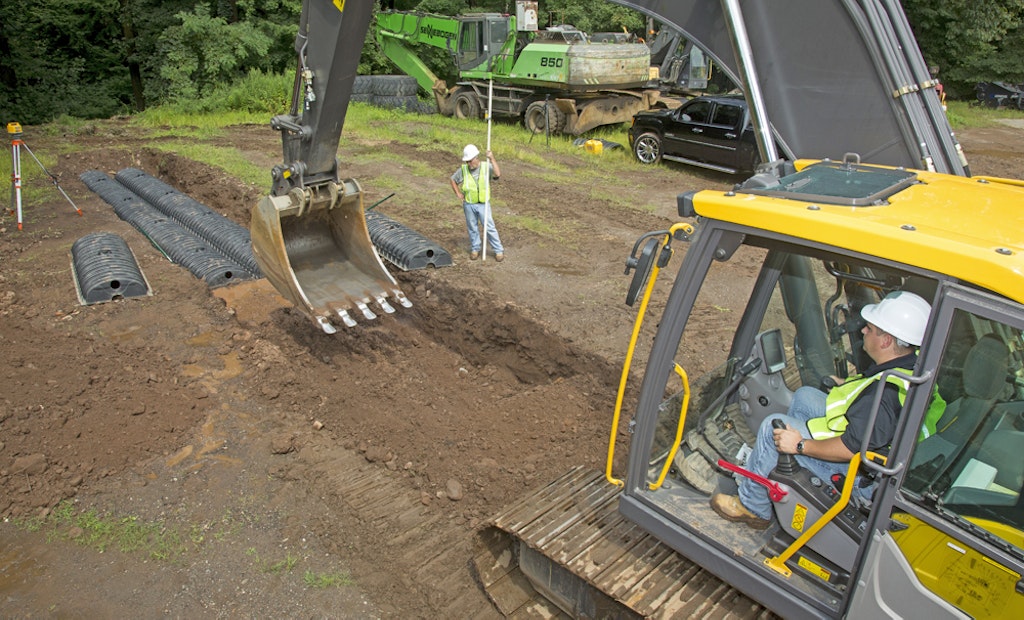
Interested in Systems/ATUs?
Get Systems/ATUs articles, news and videos right in your inbox! Sign up now.
Systems/ATUs + Get AlertsWe’ve discussed how periodically resting all of parts of a drainfield can restore soil infiltration. Next we take a look at how additional pretreatment can help drainfield restoration.
If the drainfield is having problems due to organic loading, you might be able to restore the drainfield with additional pretreatment, which reduces the loads to the drainfield. Over time this will help microorganisms in the soil breakdown the biomat, restoring some of the lost capacity.
In order to determine if the system is organically overloaded, you need to analyze the septic tank effluent using two measures: biological oxygen demand (BOD) and total suspended solids (TSS) levels. BOD measures the amount of dissolved oxygen used by microorganisms in the oxidation of organic matter. TSS is the amount of organic and inorganic suspended solids as the effluent leaves the tank.
A properly functioning septic tank should have a BOD level of 150-170 mg/L and a TSS level of 60 mg/L. Anything more increases the potential for excessive biomat formation, which reduces drainfield infiltration capacity.
Reducing fats, oils and grease — no more than 20 mg/L — is another way to achieve proper waste strength. If these levels are greater than 20 mg/L, the result is high-strength waste.
Improved performance
Additional pretreatment can help successfully reduce high-strength waste and BOD and TSS levels, and it can enhance drainfield performance. Technologies that provide additional pretreatment include aerobic treatment units and media filters (single pass and recirculating) — sand, peat, textiles and other types of media.
About 15 years ago I was involved in a study where we used additional pretreatment to restore a series of drainfield trenches. We installed a recirculating sand filter (RSF) in an existing system between the septic tank and the drainfield. The RSF helped reduce average BOD and TSS levels delivered to the drainfield to 21 mg/L and 25 mg/L.
The ultimate measure of success though is what happened in the drainfield. After we installed the RSF, the drainfield began functioning properly without backups and surfacing. Many other research and demonstration projects verify the same results.
If you’re considering drainfield restoration, be sure to determine that the problem is actually organic loading and not other soil issues. The homeowner must understand and follow a strict maintenance program that pretreatment technologies require.
Unlike a more traditional septic-tank-to-drainfield system, pretreatment technologies cannot be completely ignored between service visits. With these more complex systems, you should install an alarm to alert the homeowner to problems with the pump.
Here's a selection of the latest alarms, controls and monitoring devices:
- The wired indoor/outdoor 3014AB Filter Alarm (Smart Alarm) from Polylok provides audio/visual warning for home or business owners that a septic tank filter needs cleaning.
- The exterior alarm with pump control from Septronics has pump controls located on the right side, with all alarm controls on the left side on a separately wired board. Pump control comes with a hand-off-auto switch.
- The ML2-920 effluent filter from Bear Onsite has dual alarm switch connections, allowing installers the flexibility of choosing the Alderon Industries or SJE-Rhombus vertical reed switch to alert homeowners when filters reach approximately 90 percent capacity and need servicing.
- The Observer 500 indoor/outdoor high water alarm from SPI - Septic Products Inc. has a NEMA 4X polycarbonate enclosure rated for indoor or outdoor use, 360-degree red alarm light, alarm horn, alarm test and horn silence toggle switch, and a 6-foot 120 VAC power cord.
- The Click+Clean all-in-one panel from RH2O North America allows users to change settings and log data from the home or office, detecting problems before they occur.
- The P101FA-2 Timer from Septic Services is designed for shaft-design aerators but can be used for any application that requires mini-breaker (4- to 7-amp) shut-off capability.
- The Intelligent Pump Control (IPC) Panel from Aquaworx by Infiltrator is easy to install and leverages pressure transducer technology to monitor multiple types of system events and enhance system performance.
- No-Float timed- or demand-dose control panels from Clarus Environmental offer a “no float” sensor that detects the liquid level in the tank and sends a signal back to the panel, where it is digitally displayed in inches inside the front cover.
- PDC Series panels from Liberty Pumps control the operation of two ProVore residential grinder pumps. The system includes a primary pump control float and an alarm float.
- The 4-in-1 Controller from Orenco Systems supports numerous electrical configurations and dosing schedules within a single panel. Both Simplex (MVP-S2DM) and Duplex (MVP-DAX2DM) models are available and can be configured in the field for timed or demand dosing.
- The Dial-a-Time control from See Water is designed to control pumps with ratings up to 16 full-load amps. The compact, solid-state technology has no moving parts to become tangled, ensuring the proper evacuation of water.
- Relay Logic Series control panels from SJE-Rhombus utilize traditional, user-friendly components for simplex and duplex pump control in water and sewage applications.
- The IVM6000-LP intelligent valve monitor from Dynamic Monitors is an electronic monitor and early-warning alert system for all third-party 6000 series mechanical distributing valves.
Click here for complete product listings and manufacturer contact information.
Products in today’s market can add aeration directly to the septic tank to reduce organic loading. Success will depend on how resistive the biomat is and whether you can achieve a large enough reduction in loading to make a lasting impact.
For a list of advanced treatment units available in today’s market, visit www.onsiteinstaller.com/editorial/2014/04/advanced_treatment_units4.
About the Author
 Jim Anderson is connected with the University of Minnesota onsite wastewater treatment education program, is an emeritus professor in the university’s Department of Soil Water and Climate, and education coordinator for the National Association of Wastewater Technicians. Send him questions about septic system maintenance and operation by email to kim.peterson@colepublishing.com.
Jim Anderson is connected with the University of Minnesota onsite wastewater treatment education program, is an emeritus professor in the university’s Department of Soil Water and Climate, and education coordinator for the National Association of Wastewater Technicians. Send him questions about septic system maintenance and operation by email to kim.peterson@colepublishing.com.
